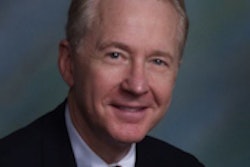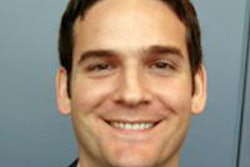As program managers begin to implement far-reaching changes in radiology residency education, most believe they'll need to limit the options available to their residents to choose their own path -- particularly in the fourth year of training -- to ensure a good basic education for core residents, according to a survey presented at RSNA 2012.
In a hot topics discussion covering new Residency Review Committee (RRC) requirements that take effect with the 2013 exams, Dr. Darel Heitkamp from Indiana University School of Medicine said that program directors will have to be creative to maintain their core standards in light of new demands, especially from fourth-year residents seeking to specialize after they complete the third-year core exam that replaces the oral boards.
Beginning in 2013, oral board exams will be eliminated for residents who began in 2010 or later. They are being replaced by a core exam after the third year of residency, which is followed by a certifying exam no sooner than 15 months after the fourth year is completed. As a result, fourth-year residents are envisioned as having more control over the specific practice areas in which they may want to specialize.
But implementing the new regime with current program resources will be challenging, at least for a while, Heitkamp said. Most respondents to a new survey of radiology resident program managers said they plan to increase the number of electives to accommodate the anticipated demands of fourth-year residents.
"Therein lies what we fear is the problem -- that of resource limitations," he said. "We feel there is a finite amount of resources available at most institutions, so if you're one of those programs that's counting on increasing the number of electives for fourth-year residents -- and in making these fourth years junior fellows and allowing them to run services like they've never done before ... and you don't have a plan in place or you don't have massive amounts of volume for your trainees -- then you run the risk of having a resource limitation and a crowding problem, and it may translate into a real educational problem for your other learners."
In a situation where fourth-year residents are acting more like fellows, scrambling for the high-value imaging rotations right along with real fellows, "then what are your third years and other core residents doing?" Heitkamp asked. To make it all work, you have to find a way to keep the fourth-year residents separate from the other trainees, he said.
New regime
After a decade of planning, in 2009 the RRC finally detailed the upcoming certification changes. Residents receiving diagnostic radiology training in July 2010 or later must be provided with appropriate clinical rotations and formal instruction in all subspecialties of diagnostic radiology and related areas such as physics and contrast media, the directive said. During the final (fourth) year of diagnostic radiology training, residents "should be allowed, within program resources, to select and participate in rotations, including general radiology, that will reflect their desired areas of concentration as they enter practice," it continued.
The directive sets up four categories of learners: medical students, core radiology residents, fourth-year residents, and fellows, Heitkamp said. "That means having medical students in the reading rooms who don't interfere in program resources," he said. In previous years, core and fourth-year residents' groups were more homogenous.
Pulling it all together will require creative solutions for optimizing fourth-year education, while ensuring adequate support for core-curriculum residents, he said. To solicit some ideas, Heitkamp created a six-question survey that was sent to chief radiology residents and program directors in every U.S. program; he received responses from 62 program directors and 66 chief residents. The responses included plenty of free-form comments, he said.
Conventional wisdom among program directors suggests that with fourth-year residents having the freedom to choose electives, program shortages will develop. To address this issue, many directors have developed ways to effectively limit fourth-year residents' options -- the phrase "within program resources" conveys some wiggle room in this regard, he said.
Most survey participants said they plan to offer more electives (54% of chief residents and 72% of program directors), Heitkamp said. Thirty-five percent of chief residents and 25% of program directors said they would offer the same number of electives going forward, while just 11% and 3%, respectively, plan to offer fewer electives.
"The number of electives and the length of electives will depend on the amount of interest in each specialty," one participant commented. "For instance, if 10 residents all want electives in interventional radiology, then the length of elective time for any one resident would have to be shorter."
Another commenter said that he planned to offer two- to four-week electives on leadership, the business of radiology, quality and safety, and informatics.
One idea for expanding fourth-year residents' choices is a medical consulting rotation in which a resident can round with medical teams and offer input on how imaging procedures may benefit patients, Heitkamp said.
Responses were more divided on balancing program resources between fourth-year and core residents, he said. But only 38% of chief residents and 21% of program directors came out in favor of trimming offerings to core residents to favor fourth-year residents. In contrast, 62% of chief residents and 39% of program directors favored protecting the core program at the expense of fourth-year offerings. And by substantial margins, chief residents (68%) and program directors (58%) planned to encourage residents to participate in nonclinical rotations in the fourth year after the core exam.
Other suggestions
Other comments focused on program financial concerns. "Unfortunately, residents need to be involved in clinical care in order for the institution to pay their salaries," one participant wrote. "We are so financially constrained right now that we cannot have residents rotate outside of the core rotations," offered another.
A majority of participants (54% of chief residents and 67% of program directors) said they plan to have fourth-year residents "act more like fellows," increasing their clinical and educational responsibilities beyond that of a traditional fourth year. Fewer than a quarter of respondents said they hadn't thought about it much, while about the same number (24% of chief residents and 16% of program directors) said they do not plan to meld the responsibilities of fourth-year residents with those of fellows.
Another survey participant said that he aims to use competition as a way of choosing participants for coveted rotations. "I'll allow one minifellow per six-month subspecialty rotation, except IR, where I have room for two," he wrote. "They've already been told that they get to choose in order of academic performance on the in-service exam."
A chief resident suggested an incentive program based on rank within the class, in-training exam results, evaluations, and timeliness of completed assignments.
Another participant opted to leave the results to fate: "There will have to be some sort of lottery system so rotations aren't too crowded." Residents would opt for a first choice, and then maybe a second or third for those not chosen for their first preference.
Multidisciplinary clinical rotations were offered as another way to expand program options. "We are in the process of developing clinical rotations for our fourth years who are intending to subspecialize," a respondent wrote. "For example, those planning to specialize in [musculoskeletal imaging] will spend some of their time rotating on the rheumatology and orthopedic services as clinical residents."
Another idea is "day float," where the fourth-year resident fills in on rotations for which the assigned resident is away due to illness or other reasons, Heitkamp said. "This would be like a practice rotation: doing something different every day," he said. Providing more night float for fourth years would also open up practice opportunities.
"We have started a subrotation," wrote another respondent. "The residents will be assigned daily to an area where there is the most need."
Other respondents said their programs plan to use additional practice sites that have not previously been tapped for education, or sites that had been reserved for fellows.
If program resources become limited, most program directors and chief residents would preserve their core residents' fundamental radiology education at the expense of their fourth years' scheduling opportunities, either by limiting the number of rotations or limiting the number of residents who can do rotations, Heitkamp concluded. Still, most programs are increasing the number of electives.
"This is one of the main reasons why I wanted to do this survey," he said. "To get these great ideas out there and share them with program directors."



















